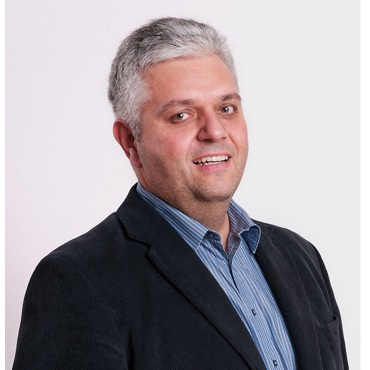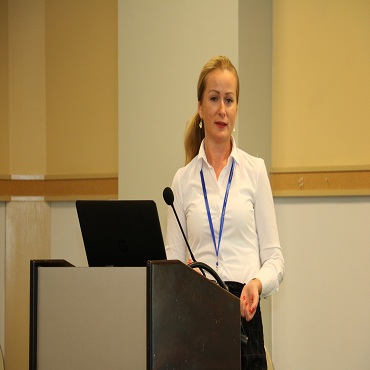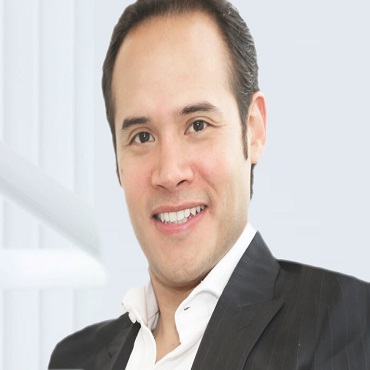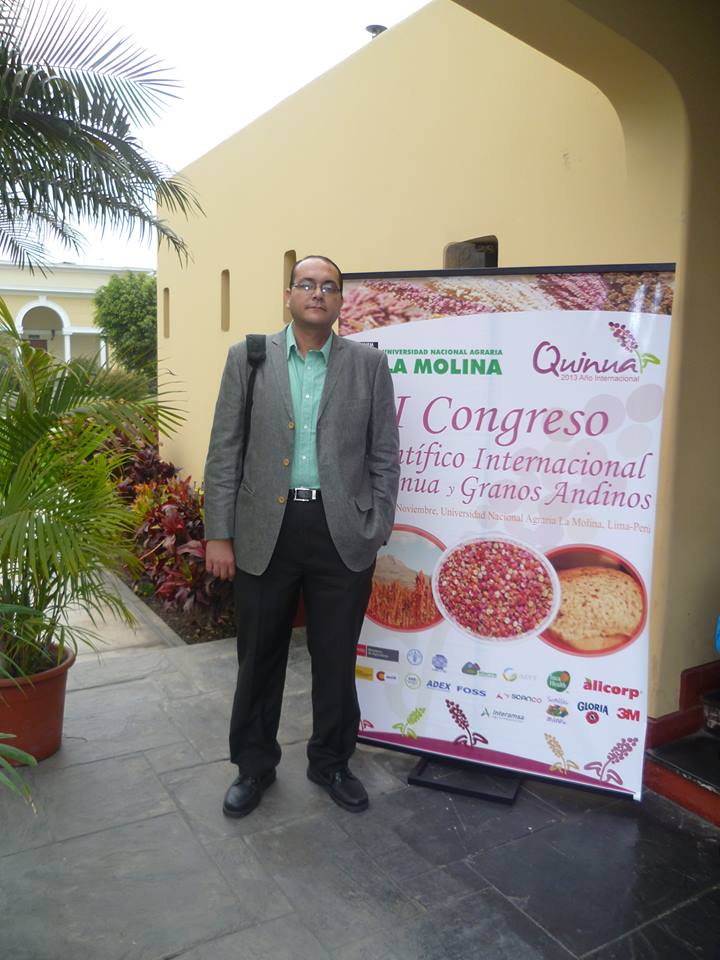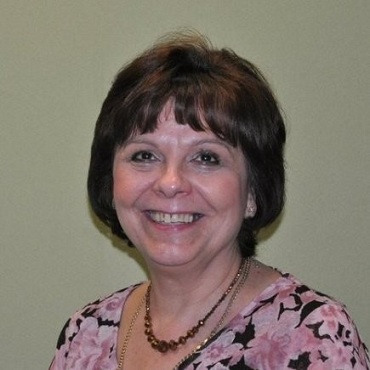Scientific Program
Keynote Session:
Title: A new Lectin Glyco-Array approach-a perfect technology to characterize glycol-pattern of Biosimilars & Biologics
Biography:
Besides serving as a Managing Director, Markus has also taken responsibilities as Head of Regulatory Affairs within the Quality Operations team. Additionally, he is in charge of business development items and client relations topics.
He was previously Head Quality Control at Igeneon/Aphton Biopharma where he was responsible for all QC aspects of pre-clinical and clinical projects such as stability studies, specifications, method validation, and product release. Before that, he was Group Leader of Immunology and Product Development at Biomin gmbh, Head Biochemical Control at Baxter AG and Head Quality Operations at Octapharma gmbh. He has more than 20 years of experience in pharmaceutical industry, with focus in vaccines, recombinant proteins and immune therapeutics. He has profound expertise in regulatory aspects such as third party audits, inspections and GMP guidelines. He has a management consulting education and additionally owns a doctorate in chemistry/biochemistry from the Technical University of Graz, Austria.
Abstract:
Major characteristics of a protein are determined by its amino acid sequence. The next levels are secondary, tertiary, and quaternary structures. Notably, protein features can be modified by a variety of posttranslational modifications including glycosylations. Approximately 50 - 60% of human proteins get some kind of glycosylation usually by the addition of N- or O-linked glycans. Glycosylation cannot only affect the structure of proteins, but also their biological activity, potency, serum half-life, pharmacokinetics, pharmacodynamics, and immunogenicity.
Therapeutic proteins represent the fastest growing market of the pharmaceutical industry and there is a tremendous rush by many companies worldwide to develop Biosimilar versions of innovator products. The type of cell line used for the production of therapeutic proteins, and defined cell culture conditions have a considerable influence on the glycosylation pattern, which in turn can directly affect product quality, safety and efficacy. Carbohydrates like terminal galactose residues, bisecting glcnac and core fucose have a critical impact on mab mediated effector functions such as Antibody-Dependent Cellular Cytotoxicity (ADCC). Mannosylated glycans and sialic acid N-Acetylneuraminic Acid (NANA) can impact PK, and lower levels of galactose reduce Complement-Dependent Cytotoxicity (CDC) activity. For production of therapeutic proteins, analysis of glycosylation patterns is thus of utmost importance.
As an example, rituximab makes it clear that a biosimilar should never be developed without knowing the status of the glycosylation pattern in comparison to the originator molecule. One biosimilar in development showed higher receptor affinity and higher ADCC activity, and therefore EMA has advised the applicant to adjust the manufacturing process. After thorough analysis, the primary amino acid sequence of the biosimilar was shown to be identical, and secondary and tertiary structures of the proteins were indistinguishable. However, proportions of some glycosylations were slightly different. A modified manufacturing process finally directed the oligosaccharide composition within the variability of the originator.
Standard techniques for analysis of glycoproteins are based on high performance liquid chromatography, mass spectrometry, and capillary electrophoresis. The application of lectins as a class of molecules that can specifically bind carbohydrate-protein structures has evolved in the last years in combination with microarrays as a promising additional tool.
Lectin microarrays were first reported in 2005 and are prepared by immobilizing various lectins on a solid surface. The microarray procedure is based on an evanescent-field fluorescence-detection principle, which allows sensitive, real-time observation of multiple lectin-carbohydrate interactions under equilibrium conditions. Analytes including glycoproteins, whole cells, or bacteria are labelled with a fluorescent dye or antibody before loading onto a commercially available lectin microarray containing up to 45 specific lectins.
The usefulness of lectin microarray technology is demonstrated with several examples. In one of these, the glycosylation pattern of the mab MB311 expressed in SP2.0 cells was compared to the mab MB314 expressed in a plant expression system to generate a de-fucosylated version of MB311. The fucose indicative lectin-binding patterns correlated with the respective ADCC activities.
Such data and available literature show convincing evidence that lectin microarrays can be used for screening and evaluating different glycan patterns of therapeutic glycoproteins.
Title: Journey through the evolution of Biosimilars
Biography:
Peter Kalinka is a Biosimilar developer of the first hour. He was fortunate enough to be in charge of the first Biosimilar to be developed, a recombinant human Growth hormone, Omnitrope. Meanwhile, He has been involved in the development of more than 17 Biosimilars and Biobetters.
Abstract:
In this talk, I will take you along on my exciting journey from this first attempt all the way to developing biosimilar monoclonal antibodies. It will shed light on how much the attitude of the European regulators changed from then to now.
The requirements were inflated due to the little experience both on the side of the sponsor and the regulators. After the first products were approved and first guidelines were issued the situation calmed and requirements were based on science and evidence. Then followed the desperate attempts of the originator companies to discredit the biosimilar movement. All sorts of arguments were presented to delay and prevent the dawn of Biosimilars. The originators fought on legal grounds and countered with semi-scientific argumentation which culminated in a final push to force Biosimilars developers to do Phase III interchangeability studies.
Finally, all these efforts will have been in vain, hundreds of millions of dollars will have been wasted. But the Biosimilars will prevail. The originators will finally go back to what they are supposed to do, innovate !
Title: Role of biologics in treatment of IBD
Biography:
Sandra Simic is graduated pharmacist (University of Pharmacy and biochemistry Zagreb, Croatia) and holds international accredited MBA postgraduate diploma from COTRUGLI Business School.
She started her career in pharmaceutical industry 14 years ago and has been in charge of several positions included project management, key account, marketing and sales management.
She has extensive experience in marketing and sales of original biologics (adalimumab and vedolizumab) in European markets. Currently she works as Biogen Biosimilars Commercial Lead in company Ewopharma which is representative partner for Biogen biosimilars program in central and eastern Europe– and is responsible for commercial operations of 3 Biogen TNF-α inhibitors in Croatian market.
Abstract:
Biologics that target autoimmune responses and inflammatory injury pathways have a marked beneficial impact on the management of many chronic diseases, including rheumatoid arthritis, psoriasis, ankylosing spondylitis and inflammatory bowel disease.
Crohn disease (CD) and ulcerative colitis (UC) belong to chronic inflammatory bowel diseases, which are induced by autoimmune processes. While CD is characterized by over-activity of Th1, ILC1, and MAIT cells, UC is mediated by exaggerated activities of Th2 and ILC2 cells and cytokines they produce. Knowledge of the pathogenesis enabled a rational therapy based mostly on biologics and small molecules.
The use of biologic therapies for the treatment of IBD is rapidly expanding, owing to the good efficacy and safety profiles of these drugs, and the better understanding of the initial targets of altered immune regulation and activity.
The major targets of most biologic therapies are cytokines, B cells, and co-stimulation molecules. Anti-cytokines include anti-tumor necrosis factor (TNF)-α, anti-interleukin (IL)-1, and anti-IL-6 molecules. B-cell depletion includes use of anti-CD20 antibodies and B cell receptor (BCR) modulation by the B-lymphocyte stimulator (blys).
TNF is the principal proinflammatory cytokine in both diseases (CD and UC). Anti-TNF monoclonal antibodies, mostly infliximab or adalimumab were therefore introduced to their treatment. Approximately 50-70 % of CD and more than 33 % of UC patients respond to primary treatment only, which resulted in the development of other biologics and small molecules. Out of them, monoclonal antibodies targeting adhesive molecules (vedolizumab, etrolizumab) and p40 chains shared by IL12 and IL23 (ustekinumab) have been already in clinical practice. There are also other small molecules in clinical trials: mongersen, tafacitinib, and ozanimod. Mongersen supports immunosuppressive activity of tgfβ; it has been tried for the treatment of CD. Tofacitinib inhibits activity of JAK kinases; it was shown to be effective in UC management. Ozanimod interferes with migrations of activated T cells to the site of inflammation and is a promising drug for the UC treatment.
Title: The Regener Age Combinatorial Bio-Interventions using Bioquantine and allogeneic Mesenchymal Stem Cells combined with a spinal cord stimulation system in a No Option patient with ASIA-A classification
Biography:
MD, CEO and Founder of Biotechnology and Regenerative Medicine at regeneragetm (www.regenerage.clinic). Vice President of International Clinical Development for Bioquark, Inc. (www.bioquark.com) and Founder and president for the Dr. Jois A.C initiative (www.drjois.com) Advance Fellow by the American Board of Anti-Aging and Regenerative Medicine (A4M), Visiting Scholar at University of North Carolina at Chapel Hill (Dermatology). Fellow in Stem Cell Medicine by the American Academy of Anti-Aging Medicine and University of South Florida.
Abstract:
In 1973 the American Spinal Injury Association made the International Standards for Neurological Classification of Spinal Cord Injury (ISNCSCI). In this clinical review our patient was classified after the vertebral fixation surgery with a ASIA-A scale injury after suffering a fracture and luxation at T-12-L1, having total spinal cord section (Fig.A). Based on the research made by Sergei Paylian, phd on animal models [1] and the safety use of allogeneic mscs demonstrated on multiple animal models applications [11,12], we decided to apply a experimental translational medical protocol based the research and the previous outcomes obtained by Hamid and macewan [8,9] and decided to customize it exclusively to our patient based on the clinical evidence and personalizing the therapy on evidence. The medical team designed an ambulatory method utilizing a C-arm to apply the allogeneic mscs in situ and using a intrathecal (subdural) catheter using a slow pump release system for the rest of the biological material with an optimum tolerance and minor side effects (mild fever, miyalgias and headache) on the first 48hrs hour after application. The experimental use of mrna Bioquantine® was well tolerated with its purified form (intra and extra-oocyte liquid phases of electroporated oocytes [6]) showing to be well tolerated by the patient without any anaphylactic reaction. The current clinical report is meant to demonstrate the beneficial changes with the use of Bioquantine® and its administration in a patient with a severe SCI offering a possible optional therapy and potential neuroregeneration in this clinical condition. Mesenchymal stem cells (mscs) are ideal for cell-based therapy in various inflammatory diseases because of their immunosuppressive and tissue repair properties. Moreover, their immunosuppressive properties and low immunogenicity contribute to a reduced or weakened immune response elicited by the implantation of allogeneic mscs compared with other cell types, allogeneic mscs are a promising option because of their low immunogenicity and immunosuppressive and tissue repair capabilities. The positive findings throughout the evolution of our protocol for spinal cord injury with the obtained results at this stage is a promising scientific based and evidence based medicine protocol that can be offered in the near future as an option for severe SCI patients. The functionality of the restoresensor® surescan® by providing the electric stimulation fortifies the medical outcome and has given the patient the confidence to perform his physical rehabilitation with more energy for a longer time by the increase or decrease of the intensity of it according to the type of exercise regulated by the control-battery he handles. At this date, after 8 intrathecal applications of allogeneic mscs and Bioquantine® in situ combined together we have got the following outcomes: an improvement in sensitivity, strength in striated muscle and smooth muscle connection by increased muscle mass (Fig.B) and sphincter control, at 23 months after the first regenerative therapy and 12 months after the placement of restoresensor® the patient is showing an evident improvement on his therapy of physical rehabilitation (legs movement and control of them) having the following movements reported by the physical therapist: a)hip: adduction and external rotation, extension, abduction, internal rotation; b)knee: flexion; c)toe: MP and IP extension, also reporting an easier and functional crawling forward and backwards, and since 3 months ago the patient is capable to stand on his knees for 2 or more minutes without any support (Fig. C) and taking small steps on his knees forward and backwards for the first time in his process, showing a progressively important functionality on both limbs, voluntary movement at both feet and an increase in sensory perception. Conclusion: As we are probing in the case, combinatorial biologics can be used safely with other electronic disposals and bring a major benefit to SCI patients. With this unique combination we can give an option to those No Option patients and create many more to improve patients quality of life.
Title: Microfluidics: An Advanced Platform for Pharmaceutical Protein Formulation
Biography:
Sabiruddin Mirza is currently a Senior Research Fellow at the School of Engineering and Applied Sciences at Harvard University, Cambridge, MA, USA and an Adjunct professor at the University of Helsinki, Helsinki, Finland. After several years in the full-time industry, he escaped to academia and earned his phd degree in pharmaceutical technology from the University of Helsinki in 2007. His dissertation research has been awarded the 2008 American Association of Pharmaceutical Scientist’s Outstanding Graduate Research Award in Pharmaceutical Technologies. His current research is focused on the engineering of advanced Nanosystems for drug delivery applications. In addition, his areas of expertise include pharmaceutical crystallization, and cocrystallization and Nano crystallization, droplet based microfluidics and solid-state characterization, preformulation and formulation. Overall, his research has attracted around $550 000 in sustained funding from the Academy of Finland, private foundations and industries. He is the author/coauthor of over 50 peer-reviewed articles and conference proceedings.
Abstract:
Protein-based therapies hold an enormous potential for treating many terminal diseases. Nevertheless, the lack of universal technological approaches that enable development of protein formulations with the targeted attributes significantly impedes clinical translation of these advanced therapies. This presentation will overview the use of droplet based microfluidic technology for developing protein formulations with pre-programmed functional characteristics, including size and internal morphology, encapsulation efficiency, and protein release profile.
Title: 4
Biography:
Mohammed Hojouj is Master of medicine, a member of The National Comprehensive Cancer Network NCCN, a member of the European Association of Physicians in Germany( NGO), member of the international conference, Speaker of the international conference in the United Arab Emirates 2015, a member of the Association of Arab doctors in Ukraine. Actual Member of the American Association of Clinical Oncology (ASCO). Has experience of more than 9 international clinical researches as Sub investigator. He gives great attention to the educational process, organization and conduction of clinical trials in oncology practice. Responsible for the educational process at the department (Foreign students).
Abstract:
The prevalence of breast cancer (BMD) in the world in general and in Ukraine is steadily increasing. Epidemiological, experimental and clinical studies have shown that metabolic disturbances associated with body mass index (BMI)> 30 kg / m2 increase the risk of occurrence and worsen the clinical course of breast cancer. Thus, in patients with obesity, a decrease in the sensitivity of the tumor to systemic antitumor therapy, an increase in the frequency of postoperative complications and a decrease in the rates of general and non-recurrent survival.
The aim of the study was to improve the results of neoadjuvant systemic antitumor therapy in breast cancer patients with abdominal obesity (BMI greater than 30 kg / m2) by administering levocarnitine in combination with NSAT for the correction of metabolic disorders as the main pathogenetic part of obesity.
Title: The regulatory framework for similar biotherapeutic products in Cuba
Biography:
Violeta Perez Rodriguez has completed his Master of Sciences in Pharmaceutical Technology and Control of Drugs at the age of 29 years from Faculty of Pharmacy and Food, Havana University, Havana, Cuba. She is the Head of Biological Division, Department of Drugs and Biologics/ Center for the State Control of Drugs, Medical Equipment and Devices (CECMED).
Abstract:
The high development achieved by the biopharmaceutical industry in the world has allowed count in the present with innovative medicines for the treatment of chronic, life threatening and severely debilitating diseases. Recombinant proteins and monoclonal antibodies represent a great percent within the medicinal products used for the treatment of diseases such as cancer, arthritis, cardiac dysfunctions and AIDS.
Access to therapies based on the use of biological products has been limited, particularly in the third world countries, as a result of the high costs stipulated by the pharmaceutical companies that developed and patented these products. The expiration of patents and data protection for many of these products in the coming years opens the opportunity to other manufacturers to produce and market, with acceptable prices, new versions of the innovator, facilitating the access to them, which in turn translates into greater benefit for our patients.
Cuba has a biopharmaceutical industry capable of responding to the increasingly rising needs of its National Health System and it is qualified to develop new products and obtain other, for examples the biosimilars. These industry might provide so much the domestic market as that of other countries of the region. In consequence with this situation, establishing the guidelines guaranteeing the quality, safety and efficacy biosimilars products is a challenge for the National Regulatory Agency (Center for State Control on the Quality of Drugs; CECMED).
CECMED has faced during the latest years the challenge of regulating a national industry with a great scientific and high innovative potential. The methodology to elaborate guidelines for this type of products was mainly based on the revision of the legal and regulatory international framework and the evaluation of the current and prospective developmental stage of the technology in. A first draft of the regulatory document was compared to guidance drafts issued by other regulatory agencies (such as OMS and EMEA) and extensively reviewed by CECMED specialists as well as by experts of the local biotech industry. As a result, a regulation project was elaborated, and its applicability tested while the assessment of an application for scientific advisory, related biosimilars product. Finally, the regulation was approved, being applicable for ¨Known Biological Product, term adopt in Cuba for the biosimilars products.
Oral Session 1:
- Innovative Approach for Biosimilars | Biosimilars Market- Challenges & Prospects | Challenges in Developing Biosimilars | Emerging Trends in Biosimilars | Biosimilars Market- Challenges & Prospects
Title: The effectiveness of systemic treatment of breast cancer depending on the body weight index using levocarnitine
Biography:
Mohammed Hojouj is Master of medicine, a member of The National Comprehensive Cancer Network NCCN, a member of the European Association of Physicians in Germany( NGO), member of the international conference, Speaker of the international conference in the United Arab Emirates 2015, a member of the Association of Arab doctors in Ukraine. Actual Member of the American Association of Clinical Oncology (ASCO). Has experience of more than 9 international clinical researches as Sub investigator. He gives great attention to the educational process, organization and conduction of clinical trials in oncology practice. Responsible for the educational process at the department (Foreign students).
Abstract:
The prevalence of breast cancer (BMD) in the world in general and in Ukraine is steadily increasing. Epidemiological, experimental and clinical studies have shown that metabolic disturbances associated with body mass index (BMI)> 30 kg / m2 increase the risk of occurrence and worsen the clinical course of breast cancer. Thus, in patients with obesity, a decrease in the sensitivity of the tumor to systemic antitumor therapy, an increase in the frequency of postoperative complications and a decrease in the rates of general and non-recurrent survival.
The aim of the study was to improve the results of neoadjuvant systemic antitumor therapy in breast cancer patients with abdominal obesity (BMI greater than 30 kg / m2) by administering levocarnitine in combination with NSAT for the correction of metabolic disorders as the main pathogenetic part of obesity.
Title: Elaboration of bread replacing partially wheat flour with pitahaya (Stenocereus queretaroensis) and chia (Salvia hispanica L) flours
Biography:
In Ecuador, bread is one of our favorite foods, being this one elaborated with wheat flour. The objective of this work was to make bread with partial substitution of wheat flour with Pitahaya flour (Stenocereus queretaroensis) and Chia (Salvia hispanica L). Three different formulations with different substitution percentages were used (15%, 25%, 30%). Bread with 25% substitution had greater acceptability in terms of the sensory characteristics evaluated: taste, smell, color and texture. The results of the physicochemical analysis made to the product with greater acceptability were protein contents with 9.32%, humidity that gave as result 32.14% and the results of the microbiological analysis showed a minimum value with respect to the maximum allowed according to the norm NTE INEN 95: 1979.
Abstract:
Elkotb khairat elsalous ahmed is working in Agrarian University, Ecuador as a professor, currently involved in food, science, tecnology and nutrition.
Title: Patient, Physician and Pharmacist Perspectives: A Wider World View
Biography:
Stephen is a member of the International Advisory Board of the Alliance for Safe Biologic Medicines (ASBM), headquartered in Virginia, USA; a Special Board Representative of the Consumer Health Forum of Australia (CHF); and a biosimilars spokesperson for the International Alliance of Patients’ Organizations (IAPO), headquartered in London.
Stephen has a special interest in biosimilars from the patient perspective and has been working with ASBM, CHF, IAPO and others over the past seven years in developing and disseminating biosimilars information and educational resources to patient, prescriber and dispenser organisations around the world.
In 2017, he travelled to Australia on behalf of ASBM to facilitate several top-level meetings with peak professional organisations and government bodies on the outcomes of the ASBM Australian Prescribers Survey. Stephen has also spoken at peak body meetings on biosimilars in The Philippines, Hong Kong, Switzerland, USA and the United Kingdom.
Abstract:
Patients need to make informed judgements on the value of biologic and biosimilar medicines as well as actively engage in discussion and decision-taking with other stakeholders involved with their healthcare – most particularly with physicians and pharmacists. Patients must have access to clear and impartial information about what biologic and biosimilar medicines are and what the growing availability of these medicines will mean for them. Patients must be assured of the regulatory systems in place to ensure safety, quality and efficacy and need to actively participate in post-approval monitoring and risk management, including pharmacovigilance. Around the world many governments, regulators, healthcare systems and practitioners are finding themselves challenged by the emergence of biosimilars – indeed in many countries it is the patient organisations that are on the front foot when it comes to getting biosimilars on the agenda.
The Alliance for Safe Biologic Medicines has conducted seven (7) major surveys involving more than twenty (20) countries focussed on the views and attitudes of physicians and pharmacists. Several interestingly consistent responses have been received from the various survey samples. Resultant observations include: USA physicians support labels with data to learn about and evaluate biosimilars; European doctors have insufficient knowledge of biosimilars; Canadian physicians feel strongly about the need to retain sole prescription authority; and USA hospital pharmacists are more likely to be “Very familiar…” with biosimilars than retail pharmacists.
For over a decade, the International Alliance of Patients’ Organisations has been working with peak patient groups and regulators around the world to address the substantial knowledge gap. Patient groups believe patients have the right to expect that the life of the patient remains the primary guiding principle of biosimilar policy discussion above potential cost savings.
This presentation will canvas these issues and will focus on the most recent ASBM being a survey of physicians in Australia published in 2016 and revealing a mismatch between government policy and physician practice.
Title: The Regener Age Combinatorial Bio-Interventions using Bioquantine and allogeneic Mesenchymal Stem Cells combined with a spinal cord stimulation system in a No Option patient with ASIA-A classification
Biography:
MD, CEO and Founder of Biotechnology and Regenerative Medicine at regeneragetm (www.regenerage.clinic). Vice President of International Clinical Development for Bioquark, Inc. (www.bioquark.com) and Founder and president for the Dr. Jois A.C initiative (www.drjois.com) Advance Fellow by the American Board of Anti-Aging and Regenerative Medicine (A4M), Visiting Scholar at University of North Carolina at Chapel Hill (Dermatology). Fellow in Stem Cell Medicine by the American Academy of Anti-Aging Medicine and University of South Florida.
Abstract:
In 1973 the American Spinal Injury Association made the International Standards for Neurological Classification of Spinal Cord Injury (ISNCSCI). In this clinical review our patient was classified after the vertebral fixation surgery with a ASIA-A scale injury after suffering a fracture and luxation at T-12-L1, having total spinal cord section (Fig.A). Based on the research made by Sergei Paylian, phd on animal models [1] and the safety use of allogeneic mscs demonstrated on multiple animal models applications [11,12], we decided to apply a experimental translational medical protocol based the research and the previous outcomes obtained by Hamid and macewan [8,9] and decided to customize it exclusively to our patient based on the clinical evidence and personalizing the therapy on evidence. The medical team designed an ambulatory method utilizing a C-arm to apply the allogeneic mscs in situ and using a intrathecal (subdural) catheter using a slow pump release system for the rest of the biological material with an optimum tolerance and minor side effects (mild fever, miyalgias and headache) on the first 48hrs hour after application. The experimental use of mrna Bioquantine® was well tolerated with its purified form (intra and extra-oocyte liquid phases of electroporated oocytes [6]) showing to be well tolerated by the patient without any anaphylactic reaction. The current clinical report is meant to demonstrate the beneficial changes with the use of Bioquantine® and its administration in a patient with a severe SCI offering a possible optional therapy and potential neuroregeneration in this clinical condition. Mesenchymal stem cells (mscs) are ideal for cell-based therapy in various inflammatory diseases because of their immunosuppressive and tissue repair properties. Moreover, their immunosuppressive properties and low immunogenicity contribute to a reduced or weakened immune response elicited by the implantation of allogeneic mscs compared with other cell types, allogeneic mscs are a promising option because of their low immunogenicity and immunosuppressive and tissue repair capabilities. The positive findings throughout the evolution of our protocol for spinal cord injury with the obtained results at this stage is a promising scientific based and evidence based medicine protocol that can be offered in the near future as an option for severe SCI patients. The functionality of the restoresensor® surescan® by providing the electric stimulation fortifies the medical outcome and has given the patient the confidence to perform his physical rehabilitation with more energy for a longer time by the increase or decrease of the intensity of it according to the type of exercise regulated by the control-battery he handles. At this date, after 8 intrathecal applications of allogeneic mscs and Bioquantine® in situ combined together we have got the following outcomes: an improvement in sensitivity, strength in striated muscle and smooth muscle connection by increased muscle mass (Fig.B) and sphincter control, at 23 months after the first regenerative therapy and 12 months after the placement of restoresensor® the patient is showing an evident improvement on his therapy of physical rehabilitation (legs movement and control of them) having the following movements reported by the physical therapist: a)hip: adduction and external rotation, extension, abduction, internal rotation; b)knee: flexion; c)toe: MP and IP extension, also reporting an easier and functional crawling forward and backwards, and since 3 months ago the patient is capable to stand on his knees for 2 or more minutes without any support (Fig. C) and taking small steps on his knees forward and backwards for the first time in his process, showing a progressively important functionality on both limbs, voluntary movement at both feet and an increase in sensory perception. Conclusion: As we are probing in the case, combinatorial biologics can be used safely with other electronic disposals and bring a major benefit to SCI patients. With this unique combination we can give an option to those No Option patients and create many more to improve patients quality of life.
Title: Biomimetic HPLC property measurements to estimate human in vivo distribution and tissue binding of drug discovery compounds
Biography:
Klara Valko has completed his phd at the age of 26 years from Semmelweis University and postdoctoral studies from Yale University, CT, USA. After working at GSK for 22 years now she is the director of Bio-Mimetic Chromatography Ltd, providing consultations and measurement services for biotech companies involved in drug discovery. She is also a honorary professor at UCL School of Pharmacy where he teaches the Physchem/ADME module for Drug Discovery and Pharma Management master course. She has published more than 100 papers in reputed journals and has been serving as an editorial board member of ADMET&DMPK journal. She is a Fellow of the Royal Society of Chemistry.
Abstract:
Biomimetic HPLC stationary phases such as Immobilized Artificial Membrane (Regis IAM.PC.DD2), Human Serum Albumin (Chiral-HSA) and α-1-glycoprotein (Chiral-agp) can mimic the in vivo interactions of the drug molecules to lipids and proteins. The calibrated retention times obtained on the biomimetic HPLC stationary phases can be used to build models for in vivo tissue-plasma partition, unbound volume of distribution, drug efficiency, cellular concentration without using animal experiments. The measurements can be fully automated and large number of compounds can be ranked for further studies for the fraction of the cost of in vivo experiments.
The methodology can be applied for new modalities in drug discovery such as peptides that would be difficult to characterize by traditional methods such as equilibrium dialysis to estimate their tissue binding and volume of distribution. Comparison of IAM partition and membrane disruption of antibiotic peptides have been investigated in order to predict their interactions with lipids.
The chromatographic retention of potential drug molecules on biomimetic stationary phases can mimic in vivo binding to lipids and proteins that was validated using human clinical data of over 150 known drug molecules.
Title: The regulatory framework for similar biotherapeutic products in Cuba
Biography:
Violeta Perez Rodriguez has completed his Master of Sciences in Pharmaceutical Technology and Control of Drugs at the age of 29 years from Faculty of Pharmacy and Food, Havana University, Havana, Cuba. She is the Head of Biological Division, Department of Drugs and Biologics/ Center for the State Control of Drugs, Medical Equipment and Devices (CECMED).
Abstract:
The high development achieved by the biopharmaceutical industry in the world has allowed count in the present with innovative medicines for the treatment of chronic, life threatening and severely debilitating diseases. Recombinant proteins and monoclonal antibodies represent a great percent within the medicinal products used for the treatment of diseases such as cancer, arthritis, cardiac dysfunctions and AIDS.
Access to therapies based on the use of biological products has been limited, particularly in the third world countries, as a result of the high costs stipulated by the pharmaceutical companies that developed and patented these products. The expiration of patents and data protection for many of these products in the coming years opens the opportunity to other manufacturers to produce and market, with acceptable prices, new versions of the innovator, facilitating the access to them, which in turn translates into greater benefit for our patients.
Cuba has a biopharmaceutical industry capable of responding to the increasingly rising needs of its National Health System and it is qualified to develop new products and obtain other, for examples the biosimilars. These industry might provide so much the domestic market as that of other countries of the region. In consequence with this situation, establishing the guidelines guaranteeing the quality, safety and efficacy biosimilars products is a challenge for the National Regulatory Agency (Center for State Control on the Quality of Drugs; CECMED).
CECMED has faced during the latest years the challenge of regulating a national industry with a great scientific and high innovative potential. The methodology to elaborate guidelines for this type of products was mainly based on the revision of the legal and regulatory international framework and the evaluation of the current and prospective developmental stage of the technology in. A first draft of the regulatory document was compared to guidance drafts issued by other regulatory agencies (such as OMS and EMEA) and extensively reviewed by CECMED specialists as well as by experts of the local biotech industry. As a result, a regulation project was elaborated, and its applicability tested while the assessment of an application for scientific advisory, related biosimilars product. Finally, the regulation was approved, being applicable for ¨Known Biological Product, term adopt in Cuba for the biosimilars products.

